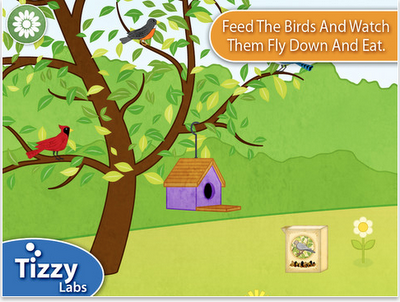As a way of wrapping up 2012, here are the 10 most popular posts on this blog from the year. It's a little artificial as this list is just based on page views, which don't take into account Google Reader or email subscriptions, but it roughly comes out as a list of posts I was pretty happy with, anyway.
It's been a great year, and I look forward to spending 2013 with you all. Happy New Year!
10- iPad Essentials: Sharing your iPad Screen as a Visual/Interactive Context with a Group
9- 2012 Edublog Award Nominations
8- iPad Essentials- Using Images
7- ASHA 2012 Highlights
6- iPad Essentials: Displaying PDFs on iPad
5- Flummox and Friends
4- QR Code Update: Make Audio-Based QRs
3- Explaining + Animation= Explanimation
2- Notice
1- Animonths-Shaun the Sheep, Netflix and Home Sheep Home
The folks at Balbus Speech in my hometown of Boston have designed an innovative app to visualize speech. Because I have few opportunities to work with fluency clients, Jessica Chase from the wonderful Consonantly Speaking offered to cross-post here as part of Appy-Picking Month. Thanks so much, Jessica!! Please check out her great site. Thank you also to Balbus, who offered a few promotional codes to our readers. If you are interested in entering the giveaway, click on over to the post on Jessica's site.
Back in June when I started my ABCs 4 SLPs series, I reviewed the Speech4Good application by Balbus Speech. Since then, they have updated their application and included a Lite version for users to try. In addition, I have been attending a workshop focusing on fluency assessment and therapy in which the application was recommended as one way to visually/auditorily practice fluency techniques.
Back in June when I started my ABCs 4 SLPs series, I reviewed the Speech4Good application by Balbus Speech. Since then, they have updated their application and included a Lite version for users to try. In addition, I have been attending a workshop focusing on fluency assessment and therapy in which the application was recommended as one way to visually/auditorily practice fluency techniques.
Speech4Good is a clean, easy to navigate and use, application that primarily focuses on fluency disorders. The four different menus that one can access on the full version of the application include SpeechCenter, Library, Sharing, and Account.
SpeechCenter shows an oscilloscope (speech graph) which you can turn on and off, uses DAF in which you can turn on and off as well as adjust the delay, and allows you to record a persons' speech. The Library shows saved recordings and notes for sessions. You can also share files to e-mail, Twitter, and Facebook from the Library. Sharing allows you to view which files you have shared and where you sent them to. The Account menu allows you to log-in to Twitter or Facebook and shows a privacy policy. You can view more information about this application's use by reading my previous review here.
I like using the oscilloscope with my students for them to monitor their speech. I also like the ability to record sessions and take notes within the application. One thing that myself as well as many others have noted in previous reviews that we would like to see taken away but is still on the application is the ability to post to Twitter and Facebook. I understand that a user makes the choice to do so, but I do not see why anyone would ever want to share a confidential file with a social media site. E-mail is fine, but it makes me nervous with HIPAA that I might accidentally press the wrong button and load a confidential file to Facebook or Twitter.SpeechCenter shows an oscilloscope (speech graph) which you can turn on and off, uses DAF in which you can turn on and off as well as adjust the delay, and allows you to record a persons' speech. The Library shows saved recordings and notes for sessions. You can also share files to e-mail, Twitter, and Facebook from the Library. Sharing allows you to view which files you have shared and where you sent them to. The Account menu allows you to log-in to Twitter or Facebook and shows a privacy policy. You can view more information about this application's use by reading my previous review here.
















.JPG)







.PNG)

.PNG)
.PNG)
.PNG)
.PNG)




